No Results Found
The page you requested could not be found. Try refining your search, or use the navigation above to locate the post.
The page you requested could not be found. Try refining your search, or use the navigation above to locate the post.
Features information that is relevant to travellers who are thinking about and actively planning a visit to Mauritus.
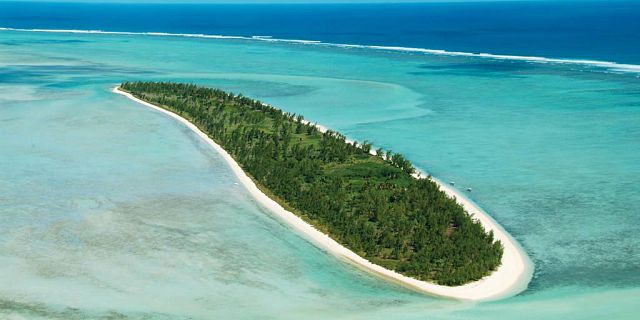
This is an islet which is also known for its sandy necklace beach encircling its shores, is located at 4 km to the west of Rodrigues. It is one and a half kilometre long and 250 metres wide.
Ile aux Cocos was declared a nature reserve in 1986. Therefore the authorities control the number of people visiting at a time. This means that you won’t have to fight with hundreds of tourists for a strip of sand.
You are only allowed a maximum of 4 hours on the island so as to not disturb the birds’ natural habitat.
Tours usually depart from Pointe du Diable and the boat trip lasts for about 1 hour. Depending on the tour company, a visit to Ile aux Cocos will cost between US$ 23.75 and 37.50 and includes the boat trip, lunch, and guided visit of the island.
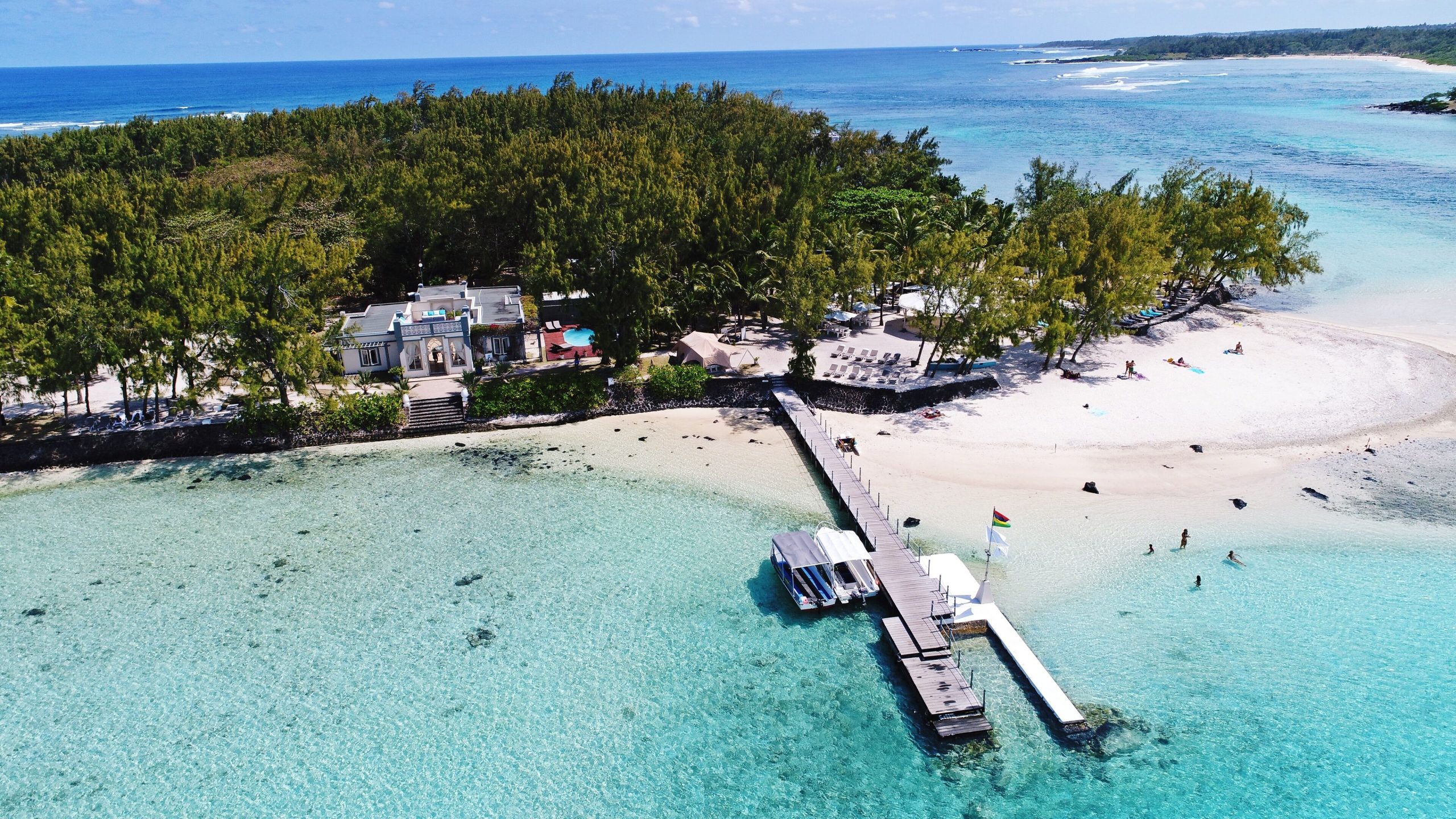
Ile Aux Cocos is also a bird sanctuary. The birds come and stay on the island during the summer, and at this time, up to 4500 birds can be seen on the island. The islet can be accessed by pirogue only with an authorization delivered by Discovery Rodrigues Company Limited. Authorised operators have access to the island for the day. It is forbidden to light fires on the island and only partial access is allowed to ensure the tranquility of the birds and their nestlings.
The islet is home to several species of seabirds including the lesser noddy, noddy, sooty tern, and fairy tern.
Two guards permanently stay on the island to keep an eye over the island. Thanks to these controls, the island remains a reproduction site for the species.
The neighbouring island, île aux Sables, which provides shelter to thousands of birds, is completely shut off to the public. In addition, fishing in the islets’ surroundings is not authorized so as to preserve the food resources of the birds that are fond of squids and small fishes.
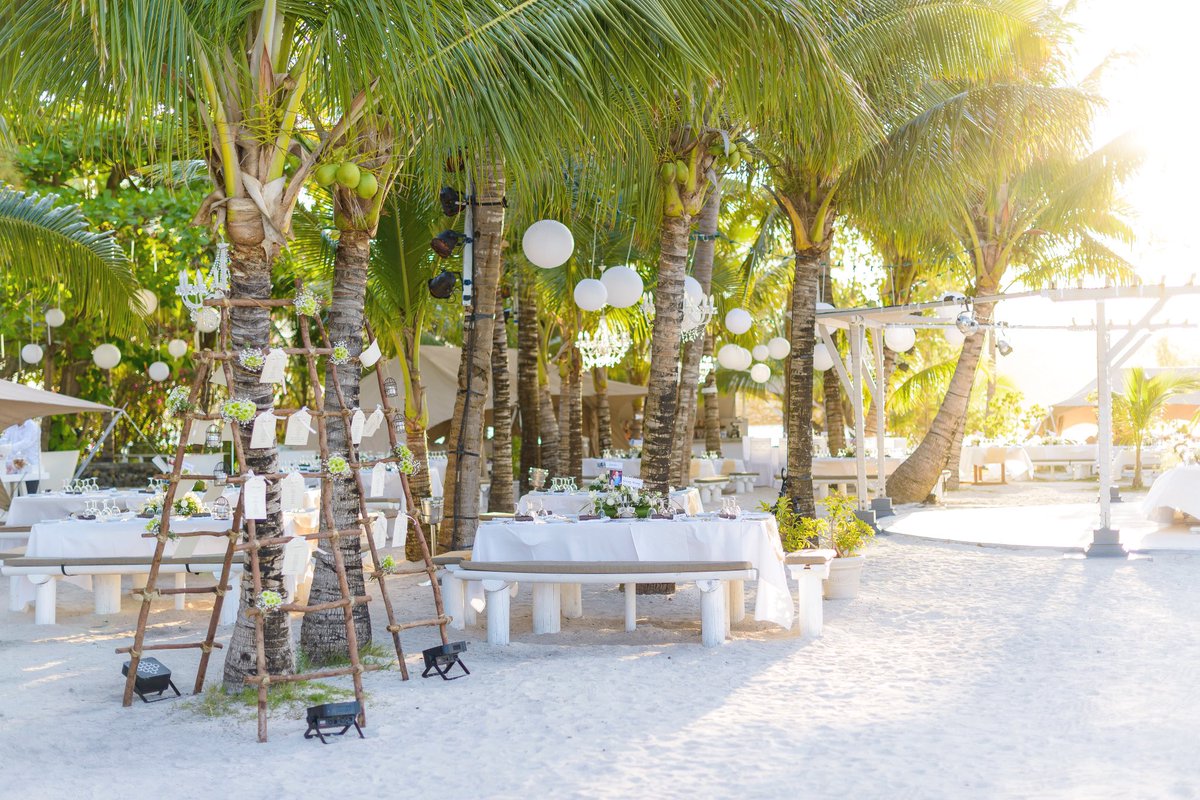
Scuba Diving programme for beginners in the marine park (2-5 meters). Qualified and licensed divers can perform exploration dives in the marine park (depth 5-10 meters). Depending on sea conditions experienced divers can perform scuba diving at Trou Mootoo, outside the lagoon.
Snorkelling and glass bottom boats will take you to the ship wreck outside the Blue Bay zone which is approximately about 10-15 minute boat ride. The one hour trip includes swimming and snorkelling.
A speed boat trip can be arranged to 1 or 2 hours depending on guest requirements. The trip will include visits to the famous islands of Iles aux Phares, île de la Passe and île aux Aigrettes. The first two islands for sightseeing and pictures and to watch îles aux Aigrettes from the boat itself. Boat capacity: 20 Pax (Minimum 4 pax per trip).
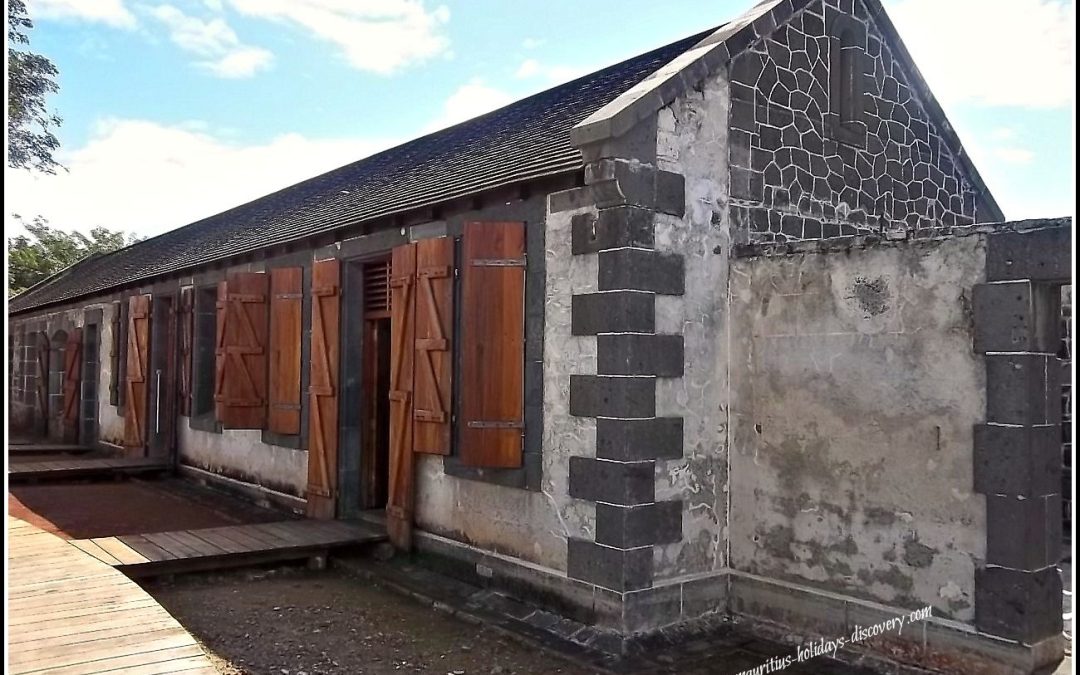
Aapravasi Ghat is a district of Port Louis. This was the first site chosen by the British Government in 1834 for the ‘great experiment’ in the use of indentured, instead of slave labour.
Between 1834 and 1920, almost half a million indentured labourers arrived from India at Aapravasi Ghat to work in the sugar plantations of Mauritius. The buildings of Aapravasi Ghat are among the earliest explicit manifestations of what was to become a global economic system and one of the greatest migrations in history.
Aapravasi Ghat is the remains of an immigration depot which was built in 1849 to receive indentured labourers from India, Eastern Africa, Madagascar, China and Southeast Asia to work on the island’s sugar estates. Other colonial powers adopted system of indentured labour in place of slavery. This resulted in a world-wide migration of more than two million indentured labourers, of which Mauritius received almost half a million.

At present, only half of the Immigration Depot area as it existed in 1865, remains. The rest of the complex was lost due to unchecked infrastructural development in the mid-20th century. However, original structural key components still stand. These include the remains of the sheds for the housing of the immigrants, kitchens, lavatories, a building used as a hospital block and a highly symbolic flight of 14 steps upon which all immigrants had to lay foot before entering the immigration depot.
The Aapravasi Ghat site is now owned by the Ministry of Arts and Culture. The property is protected as National Heritage under the National Heritage Fund Act 2003 and the Aapravasi Ghat Trust Fund Act 2001.
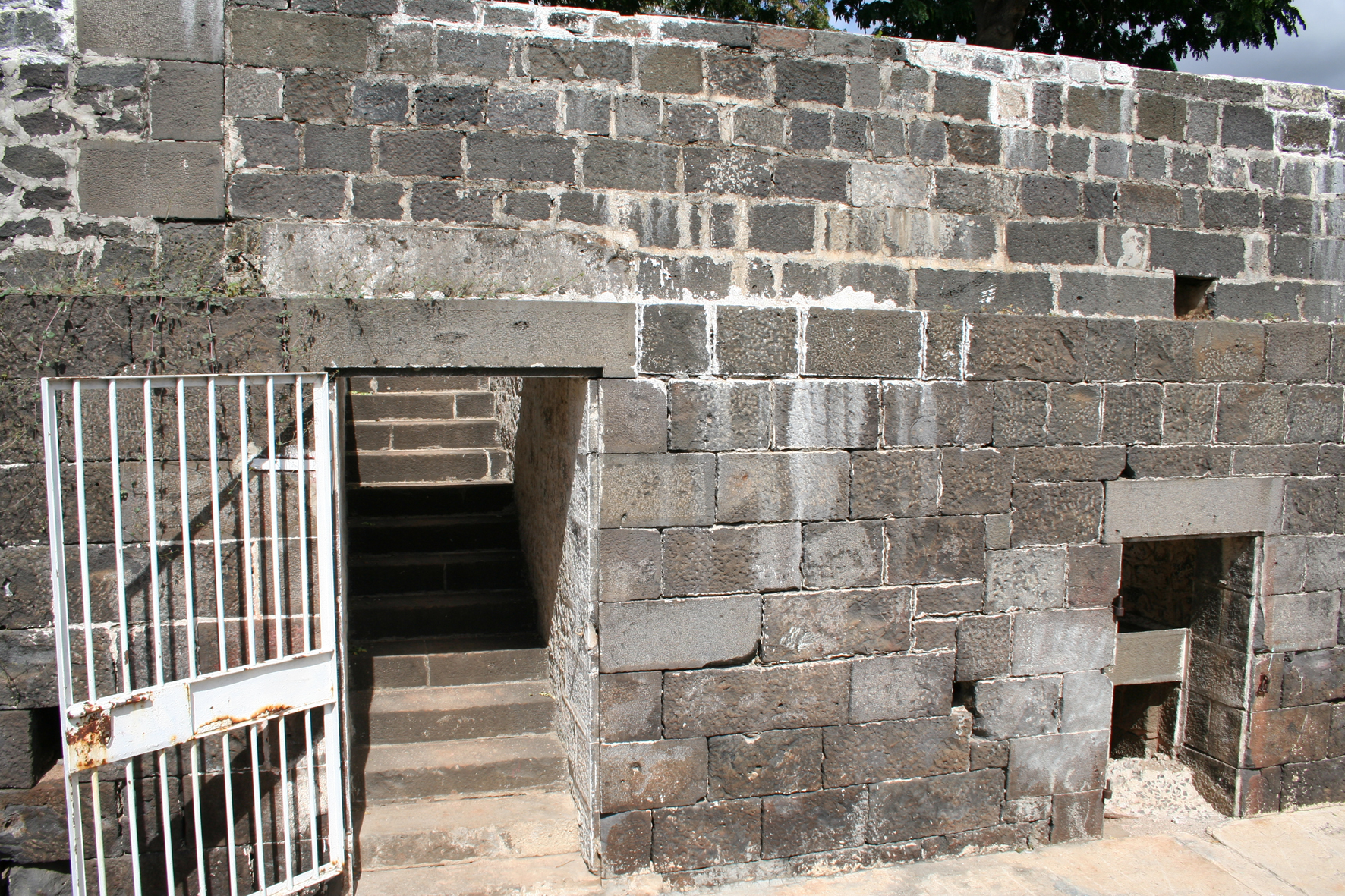
UNESCO declared Aapravasi Ghat as a World Heritage Site in 2006. It is one of two World Heritage Sites in Mauritius, along with Le Morne Brabant.
Aapravasi is the Hindi word for “immigrant”, while ghat literally means “interface” , symbolically marking a transition between the old life and the new for the arriving indentured immigrants.
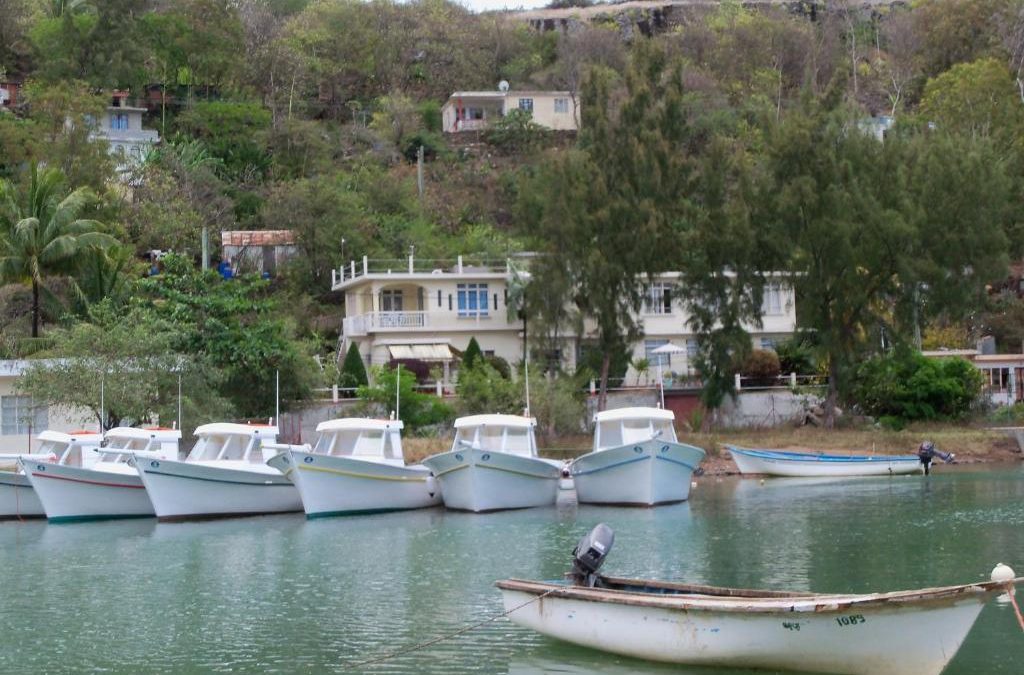
Pointe Canon is located in Port Mathurin and was used as a watch area during the British ruling. Nowadays, it serves as both a panoramic viewpoint and religious site. Pointe Canon has more than 300 inhabitants.
The place got its name from a cannon, placed on a promontory to monitor and protect the harbor. At the time, this “point” was appropriate, because erected on the heights of Port Mathurin, it was the ideal place to scan the horizons and thus detect the approach of enemy ships.
In the early 1950s, money was raised to buy a statue of the Virgin Mary from England to create a monument similar to Marie Reine de la Paix in Mauritius. The statue was then inaugurated in 1954. The statue, named Marie, Queen of Rodrigues, is 6 feet tall. Every August 15, the Rodriguans attend mass at the foot of the statue to commemorate the inauguration of the statue. It is not just a gathering site for the Catholics of the island, but is also a popular tourist site.
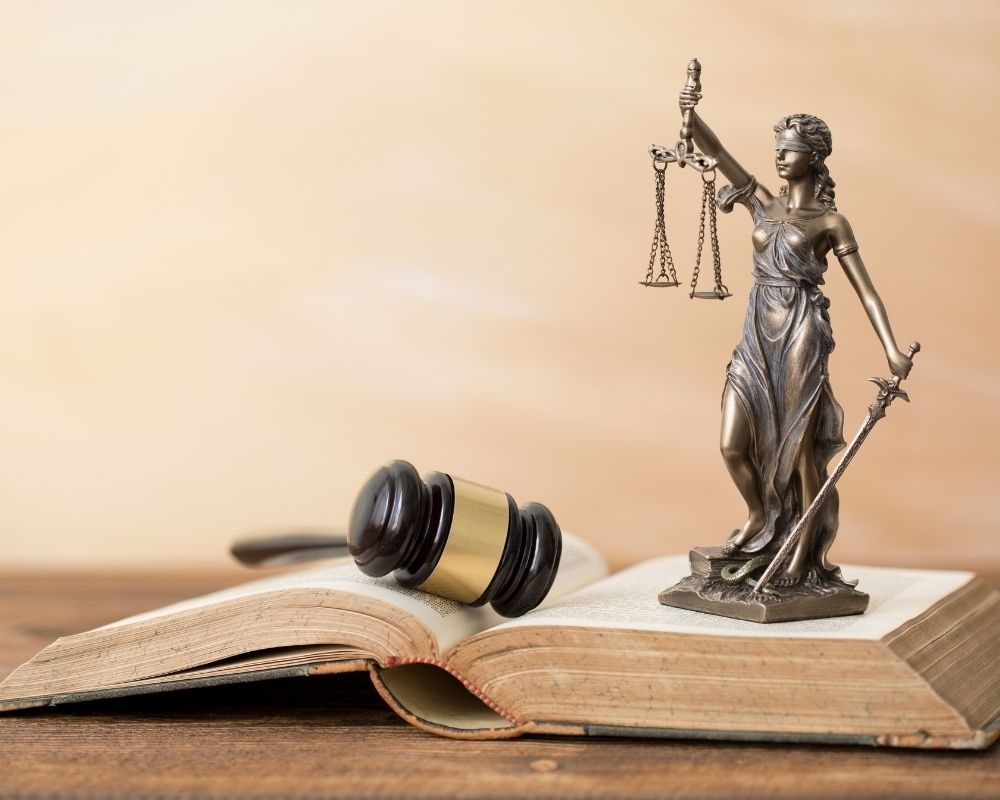
From this viewpoint you will get a panoramic view of the whole capital including the market, bus terminal, the azure blue lagoon, harbor and neighboring villages. The place also offers a panoramic view of the bus station, rue François Leguât and the Winston Church Hill bridge. You can also witness disembarkation of the goods at the mooring of the MV Anna or the Mauritius Trochetia in port.
Pointe Canon also hosts the headquarters of the meteorological station. It is from this old observatory of the English era that the population receives the predictions of the weather.
The place is also a meeting place for French expatriates in Rodrigues to mark the French National Day.
There is a parking area next to the hairpin bend beside Pointe Canon Meteorological station.
Escale Vacances, Lacaze TiMay, Le Flamboyant Hotel , Hebergement Vue Sur Mer, Hebergement Fatehmamode and Chez Jenny,Villa Le Chapo are some of the accommodations near Pont Canon.
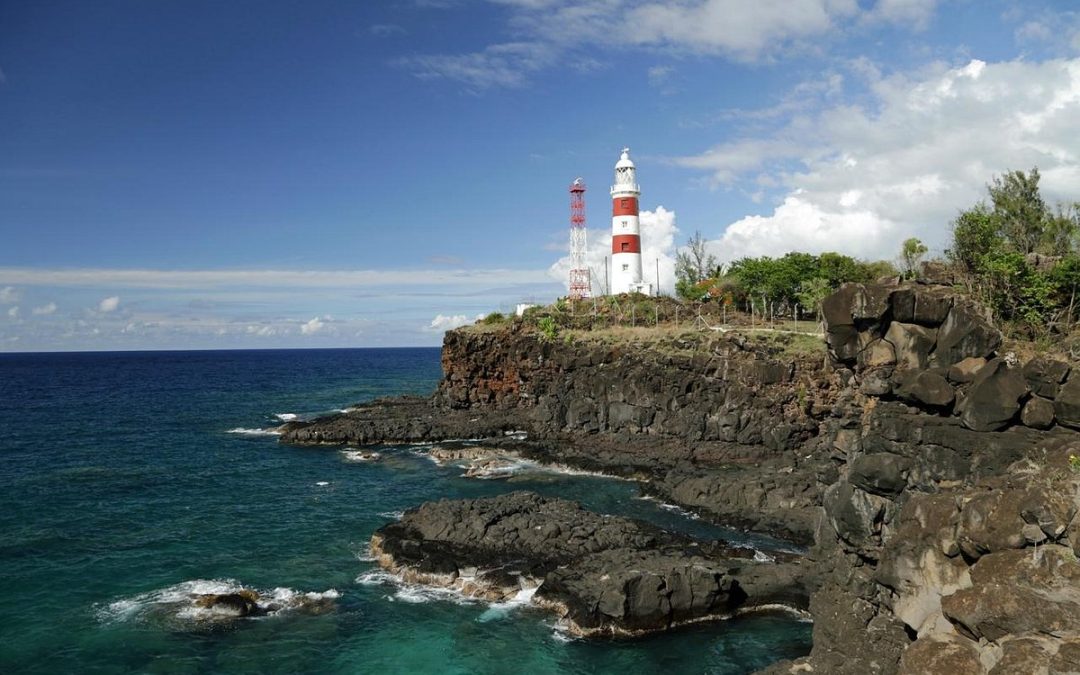
The lighthouse, otherwise known as the Pointe aux Caves Lighthouse, serves as guides for incoming ships to enter the harbour of Port Louis. It is 30-metre tall and is located at Albion, west coast of Mauritius. It stands on the edge of the cliff and overlooks the sea. It has iconic red and white stripes from top to bottom. It has four floors, a dome and a balcony that can be accessed by the steep staircase. It was inaugurated in 1910 and is still intact.
It is not recommended to visit the Albion Lighthouse on a windy day.
To access the top of the lighthouse, you will have to climb up the 98-step wooden and cast iron staircase and you will be rewarded with magnificent panoramic views of the entire coastline from Pointe aux Sables to Flic en Flac. Even walking along the trail that runs up to the lighthouse does offer breathtaking views over the shoreline. Under the cliffs there is an entrance to a cave which is inhabited by birds and bats.
It is a popular spot for photographers with the amazing background for pictures. The sunset promises the beautiful fusion of colours of the sky, sun and the sea.
This lighthouse is 30 meters tall and has four floors, a balcony, and a dome. The first floor has an electrical panel from where the other equipment of the lighthouse are controlled. The second floor of the lighthouse is a lens room which projects a red light that is pointed towards the entrance of the Port and it helps the sailors to locate the entrance to the port.
You can see enormous and well preserved old lenses in the dome. The system is rotated by an electric motor every night which generates a double flash in an interval of 15 seconds which can be seen even from a distance of 29 nautical miles. Just outside the dome, you can step on to the balcony to enjoy the magnificent views, the most phenomenal being the view of Montagne Jacquot.
Near the light house there are 4 interesting places to visit,t hey are Bagatelle Mall, Eureka Falls, Aapravasi Ghat and Le Morne Cultural Landscape.


Mahébourg is a small town on the south-eastern coast of the island of Mauritius, having a population of 15,457 as of 2015. It is considered the main town of the Grand Port District.
The town of Mahébourg was founded in 1805 and named after the French governor, Mahé de Labourdonnais. In 1810, it was witness to the only French naval victory of the Napoleonic Wars at the Battle of Grand Port.
After the French chose Port Louis as the main port Mahébourg declined into a sleepy coastal city. The past is still preserved today in the Historical Naval Museum which also recounts the epic naval battles of the past between the French Navy and the Royal Navy. The Dutch historical museum in Grand Port tells the story of the early Dutch settlement of the island.
Mahébourg is only 15mins and around 10km from the International Airport. It is also 50km or one hour drive away from the capital Port Louis. You can easily get the bus to Port Louis or to other cities such as Quatre Bornes and Curepipe. The best time to visit Mahébourg is between October and November and Late April to May, when the temperature is less humid and hot. Average temperature in summer is around 30°C and in winter, temperature can drop to 20°C.

There are many places to stay in and around Mahébourg including hotels, guest houses and private villas that range from deluxe resorts to rooms to let. Preskil Island Resort, Astroea Beach Hotel, Nativ Lodge & Spa and Paradise Beach by Horizon Holidays are some of the hotels found there.
Blue Bay, Pointe d’Esny and La Cambuse. Mahébourg Waterfront, Mahébourg Museum, and Rault Biscuit Factory are some of the attractions near Mahébourg.
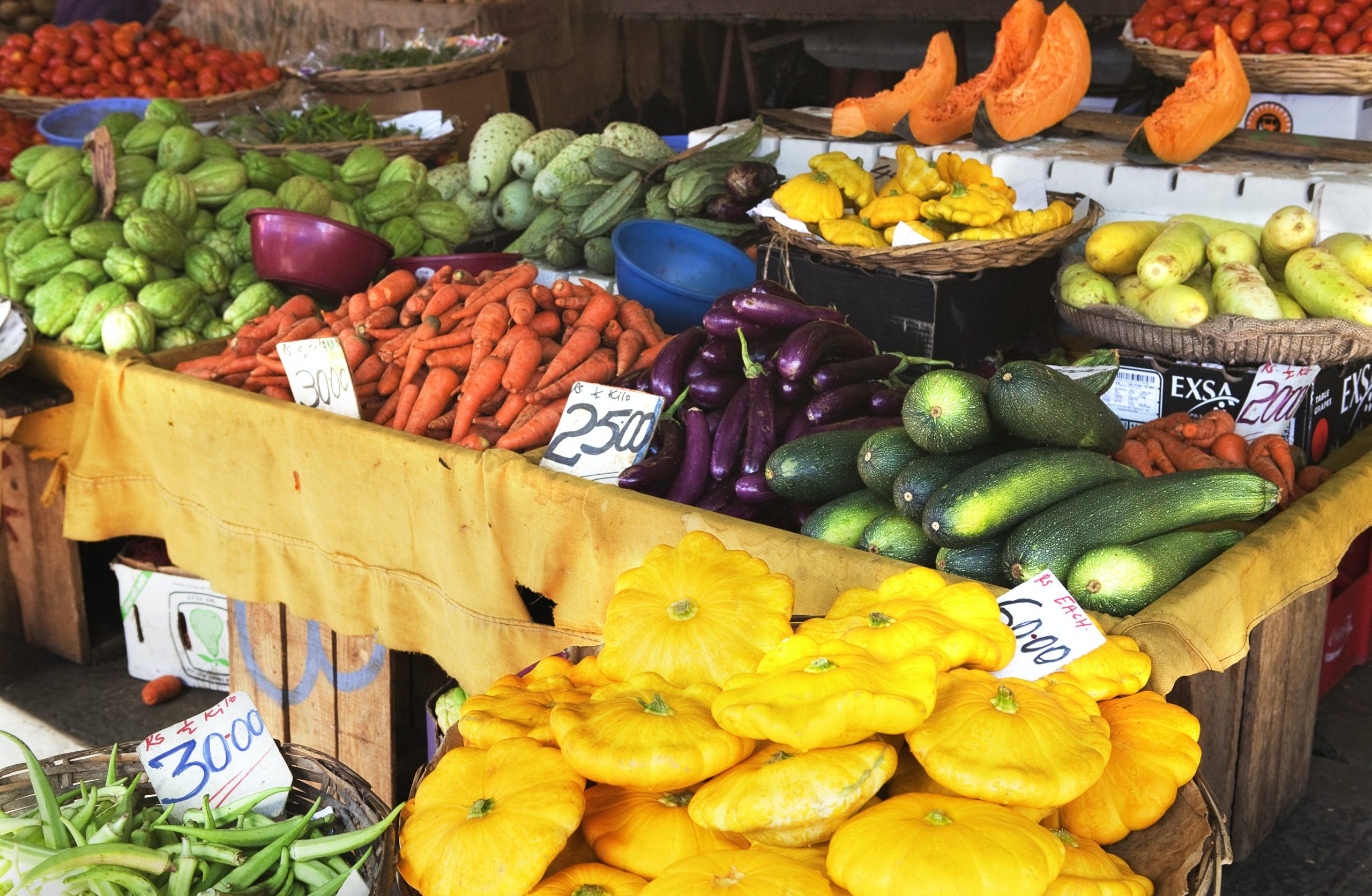
The Mahébourg Monday market is famous for trinkets and steaming food stalls selling some local snacks such as gâteaux piments (chili cakes), dhal puri (lentil pancakes) and samousas (samosas) which are usually dispensed from boxes on the backs of motorcycles. The market is open every day but doubles in size on Monday.
Bo’Valon Mall is located in the intersection of Blue Bay and Mahébourg arterial roads. The mall has a specious food court as well as 46 other shops such as Espace Maison, fashion outlets, health and beauty stores, and sports outlets.
Mahébourg is well known for its lagoon (the biggest in Mauritius) and for its fishing industry.
The largest company and the main employer for the Mahebourg area is Omnicane. The mill annually produces around 135,000 tons of Plantation White Sugar for the refinery, 400,000 tons of bagasse for its main cogeneration power plant, and 45,000 tons of molasses for the bioethanol distillery. Omnicane’s sugarcane mill processes 1.3 million tons of sugarcane a year and has a daily milling capacity of 8,500 tons.
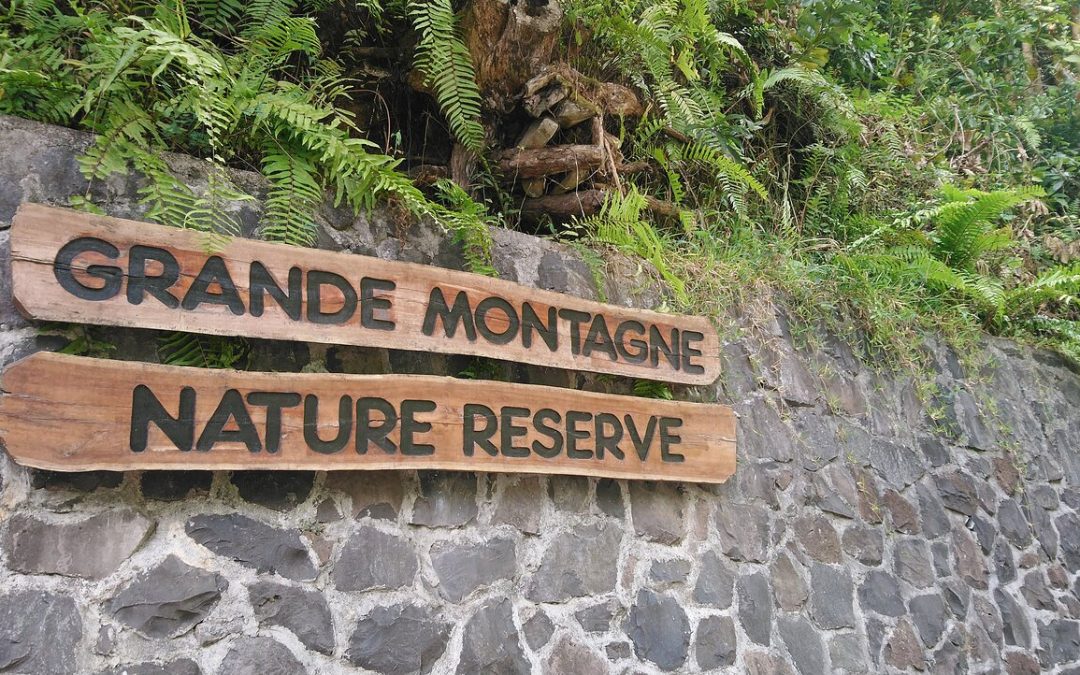
This nature reserve, one of the last remaining stands of forest on Rodrigues, crowns the island’s summit. It is located in the high Grand Montagne mountains, in the central eastern part of Rodrigues.
The Mauritian Wildlife Foundation has planted more than 200,000 native plant species across more than 25 hectares. Around 84% of the 25.5 ha fenced area at Grande Montagne has been restored to date and the aim of MWF is to complete the initial restoration of this reserve within the next few years. Over 156,516 plants have been planted in the reserve by MWF. So far 40 rare Rodriguan plant species are successfully conserved on Grande Montagne.

The population of the Rodrigues Fody has been increased to reach 8,000 individuals, whilst 4,000 Rodrigues Warbler have been added as a part of the habitat restoration on Grande Montagne.
The restoration of this ecosystem has ensured the survival of the Rodrigues fody and the Rodrigues warbler bird species, as well as the Rodrigues fruit bat. The reserve is also the only remaining habitat of the endemic Rodrigues Aloe.
The reserve is included in the Rodrigues Environmental Education Programme where students visit and are taught about the reserve and its importance.
The MWF runs free guided tours weekdays and Saturdays. You can get the useful (and free) Grande Montagne Nature Reserve Field Guide from the information centre at the entrance to help you with plant and bird identification.
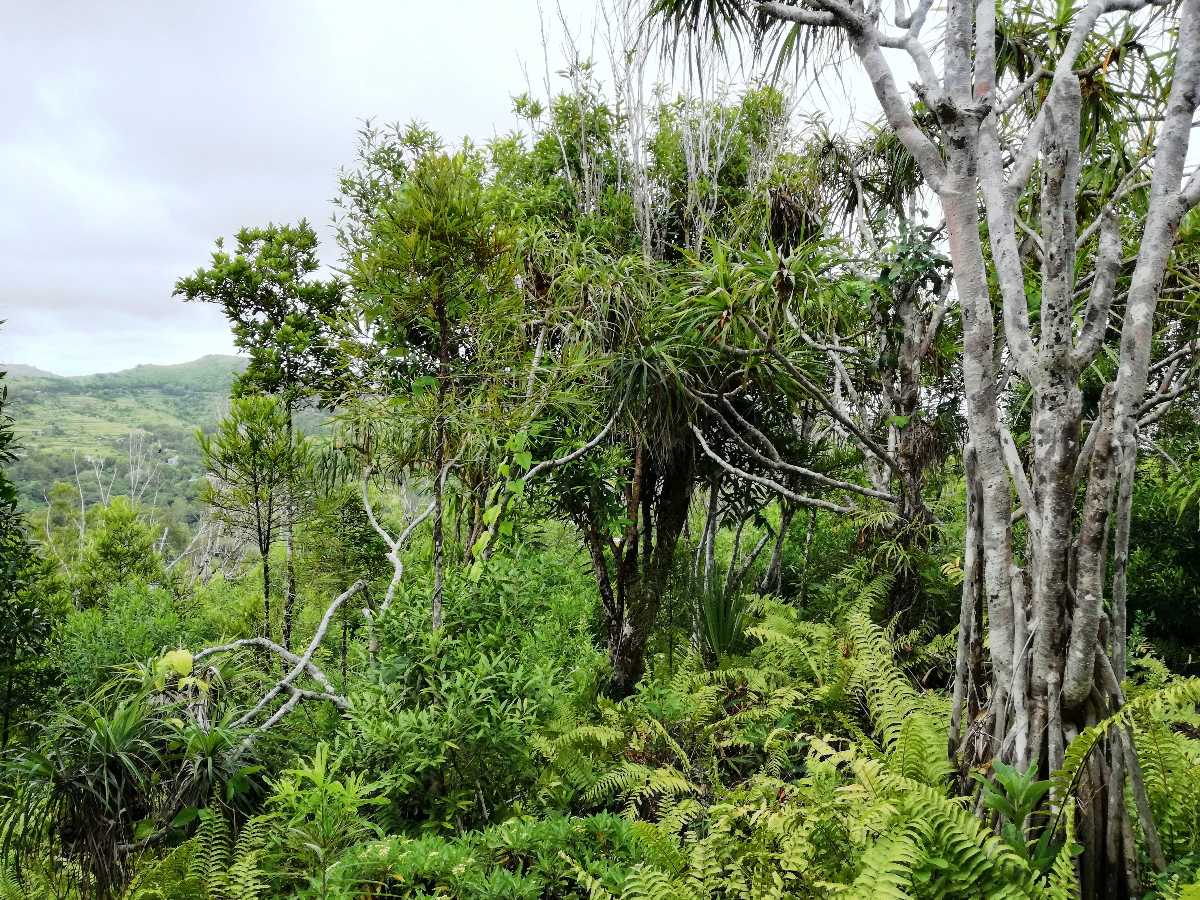
Tours are conducted at 9.30 a.m and 1.15 p.m from Monday to Friday and at 9.30 a.m on Saturday. The tour lasts for about two hours.
At about ¾ of the trail there is a view point where you’ll get one of the best panoramic views of the southeast coast. At the education center you can view a display of the Solitaire bird and giant tortoise skeletons.
One section also serves as a little tortoise park where you’ll get to see five tortoises roaming about freely.

The Blue Penny Museum is situated at Caudan Waterfront in Port Louis. It opened in November 2001.
In the museum there are six exhibition rooms dedicated to history, literature and art. The maritime world room shows exhibits relating to navigation, exploration, discovery, maps, technology, commercial routes. The Colonization room portrays stories of the taking over of territories, settlement, population and development. The capital, Port Louis Room shows the evolution and development of the port and town since 1736. Postal history room has exhibits relating to means, channels and organization of communication systems over nearly four centuries.
There is also a room displaying historical sources, the tragedy, the vestiges, the novel and its notoriety, the artistic representations of the novel “Paul et Virginie”. Paul et Virginie is a novel by Jacques-Henri Bernardin de Saint-Pierre, first published in 1788. The story is set on the island of Mauritius under French rule, then named Île de France.
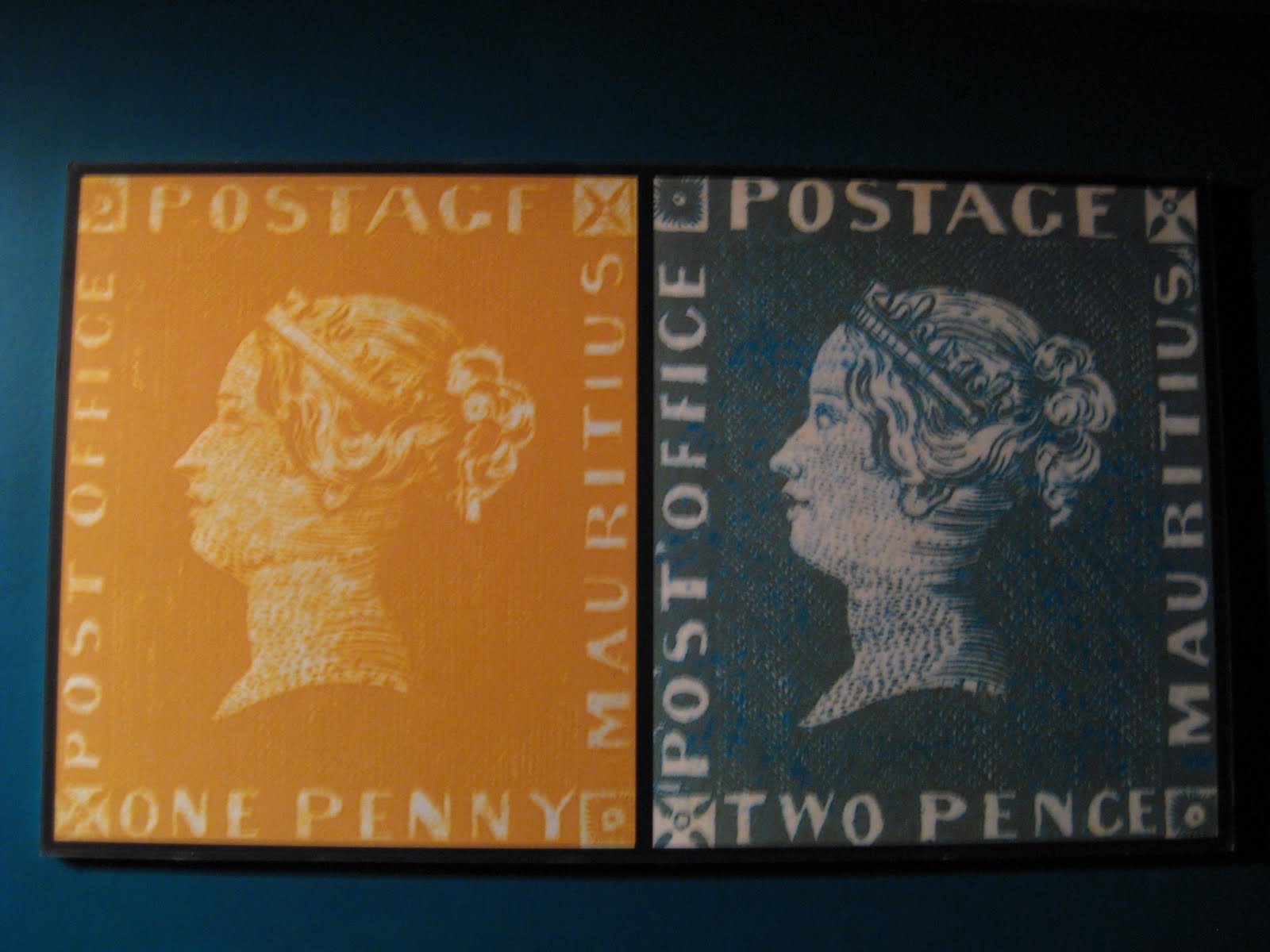
The Philately room has a collection that includes the 1847 Blue Penny and Red Penny stamps. The stamps were bought in 1993 for $2,000,000 by a consortium of Mauritian enterprises headed by The Mauritius Commercial Bank and brought back to Mauritius after almost 150 years. The museum, founded by The Mauritius Commercial Bank.
For conservation, the originals are illuminated only temporarily. Most of the time only copies are available for viewing.
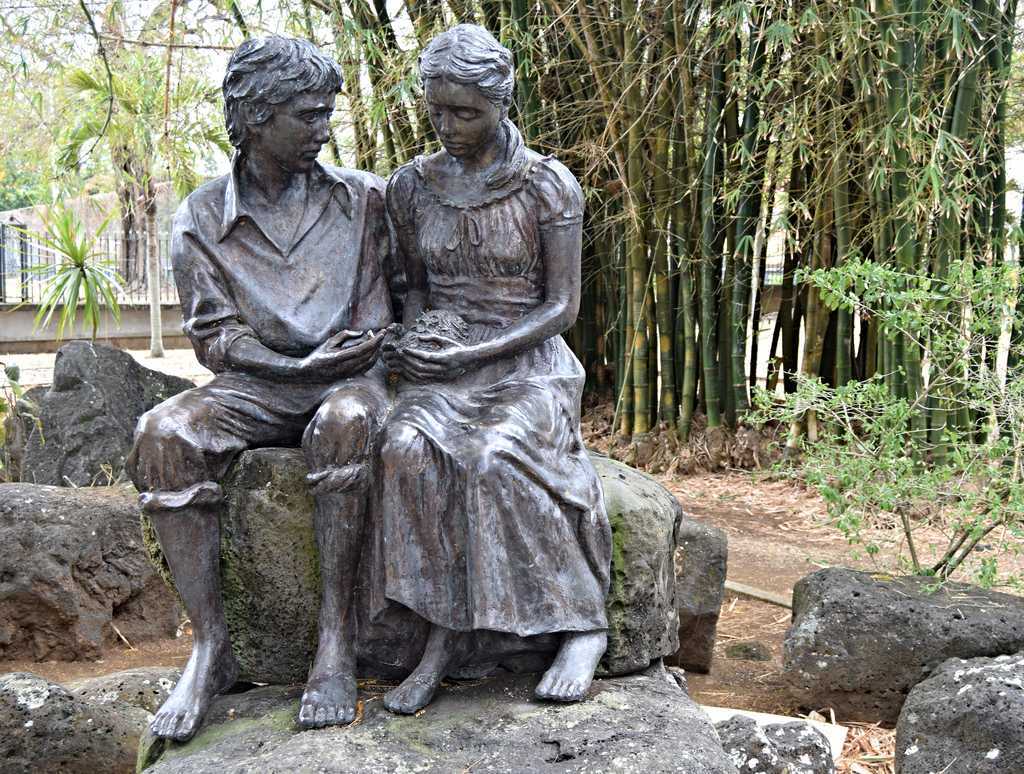
Paul et Virginie sculpture
In 1881, the Municipality of Port Louis, of the colony of Mauritius, commissioned Mauritian sculptor Prosper d’Epinay, to create a marble sculpture inspired by the novel, “Paul et Virginie”. The artist carved the sculpture from a single block of Carrara marble. The sculpture remained on display in d’Epinay workshop in Rome until 1886,when it was bought by a Portuguese collector. The original statue was purchased at an auction in London in October 1997 and was finally brought back to its initial destination.